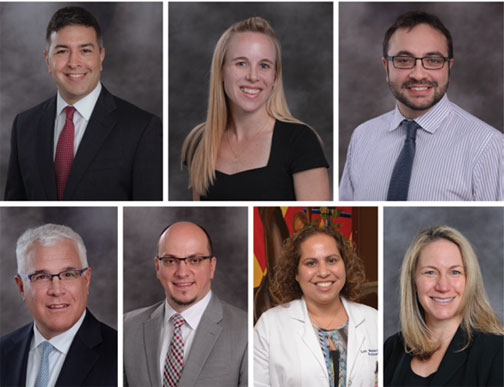The Connecticut System of Colleges and Universities is facing a number of challenges with an uncertain budget and unwanted tuition hikes.
Nevertheless, CSCU President Mark Ojakian is maintaining a positive mind-set.

“The state of our system is very strong,” Ojakian said at his Hartford office. “We are continuing to make strides everywhere in terms of our public image and in the way we use taxpayer dollars.”
Part of those advances are on the technological side. In October the CSCU announced it had established the Precision Metalforming Association Scholarship for Tunxis, Middlesex and Naugatuck Valley Community College students who are studying precision manufacturing/machining.
“Advanced manufacturing employers are telling us they need skilled workers ”” 25,000 skilled workers over the next decade ”” and the Advanced Manufacturing Technology Centers at the state”™s community colleges are up to the challenge,” Ojakian said. “The Precision Metalforming Association Scholarship will help advance our goal as Connecticut”™s manufacturing pipeline.”
Housatonic Community College in Bridgeport is one of the CSCU”™s 17 member schools that offer Advanced Manufacturing Technology certificate programs. The CSCU also operates the Office of Information Technology of the Board of Regents, which facilitates collaboration and coordination of information technology activities among CSCU institutions. And its College of Technology offers an Associate”™s Degree in Engineering Science or Technology Studies from a Connecticut community college as well as a Bachelor”™s from one of several College of Technology partner universities, including Fairfield University and the University of Bridgeport.
Regarding the CSCU system as a whole, Ojakian noted that in the first analysis of its kind conducted by the organization, its 17 member schools, which also include Norwalk Community College and Western Connecticut State University in Danbury, contributed $11.1 billion in income to the state economy, and that the activities of its institutions and their students supported over 123,000 jobs, or one out of every 19 jobs in Connecticut, during fiscal year 2016-17.
According to the report, conducted by independent data research firm EMSI, taxpayers provided CSCU with $629 million of funding in fiscal year 2016-17. “In return, they will benefit from added tax revenue, stemming from students”™ higher lifetime earnings and increased business output, amounting to $2.2 billion,” it declared. “For every dollar of public money invested in CSCU, taxpayers will receive $3.80 in return, over the course of students”™ working lives. The average annual rate of return for taxpayers is 9.4 percent.”
That the study was released in December was no coincidence. The CSCU continues to seek funding from the state Legislature to address budget shortfalls. “To hold tuition flat for 2019-20, we need $15.1 million from the state,” Ojakian said.
In 2017, the CSCU board adopted a tuition and fee schedule that included a 4 percent increase at each of the four state universities, a 2.5 percent rise at the 12 community colleges and a 4 percent increase at Charter Oak State College for the 2017-18 fiscal year. Some 85,000 students attend CSCU schools with about 15,000 graduating annually.
“I”™ve talked with members of the General Assembly and the new governor about the momentum we”™ve built over the last few years,” Ojakian said. “We have very good working relationships with leadership on both sides of the aisle. But there are many new members in the General Assembly this year, so we have to educate them about our system and what we do.”
At the same time, the CSCU is considering a number of free or reduced-rate tuition models aimed at keeping education affordable and to encourage completion. Ideas range from freezing tuition for two or four years, keeping it flat for full-time students and incentivizing those who graduate from the system via a rebate on some of those students”™ total costs.
Other tuition-related options under discussion include guaranteeing a flat rate for incoming full-time freshmen for three years at community colleges and for five years at universities, attending for free during their last semester and providing payment for the education if they meet certain requirements, including a high grade-point average and attendance rate.
Ben Barnes, the former secretary of the State of Connecticut Office of Policy and Management who became CSCU”™s CFO in January, “is busy at work modeling those tuition scenarios,” Ojakian said. His recommendations are expected to be among the subjects to be discussed at the next meeting of the CSCU board”™s Finance Committee on Feb. 14.
Another possible means of saving money is consolidation. The CSCU leader said he took heart from Gov. Ned Lamont”™s past comments about saving money by combining services, and expressed interest in the new governor”™s apparent support of Senate President Pro Tempore Martin Looney”™s introduction of a bill that would mandate consolidation of K-12 school districts in towns with a total population of less than 40,000.
Ojakian”™s own plan to save money by consolidating its 12 community colleges into one system ”” which was estimated to potentially save $17 million per year ”” failed to pass muster with accrediting agency the New England Association of Schools and Colleges last spring, but the organization has continued to discuss how a revised plan could still be implemented.



















